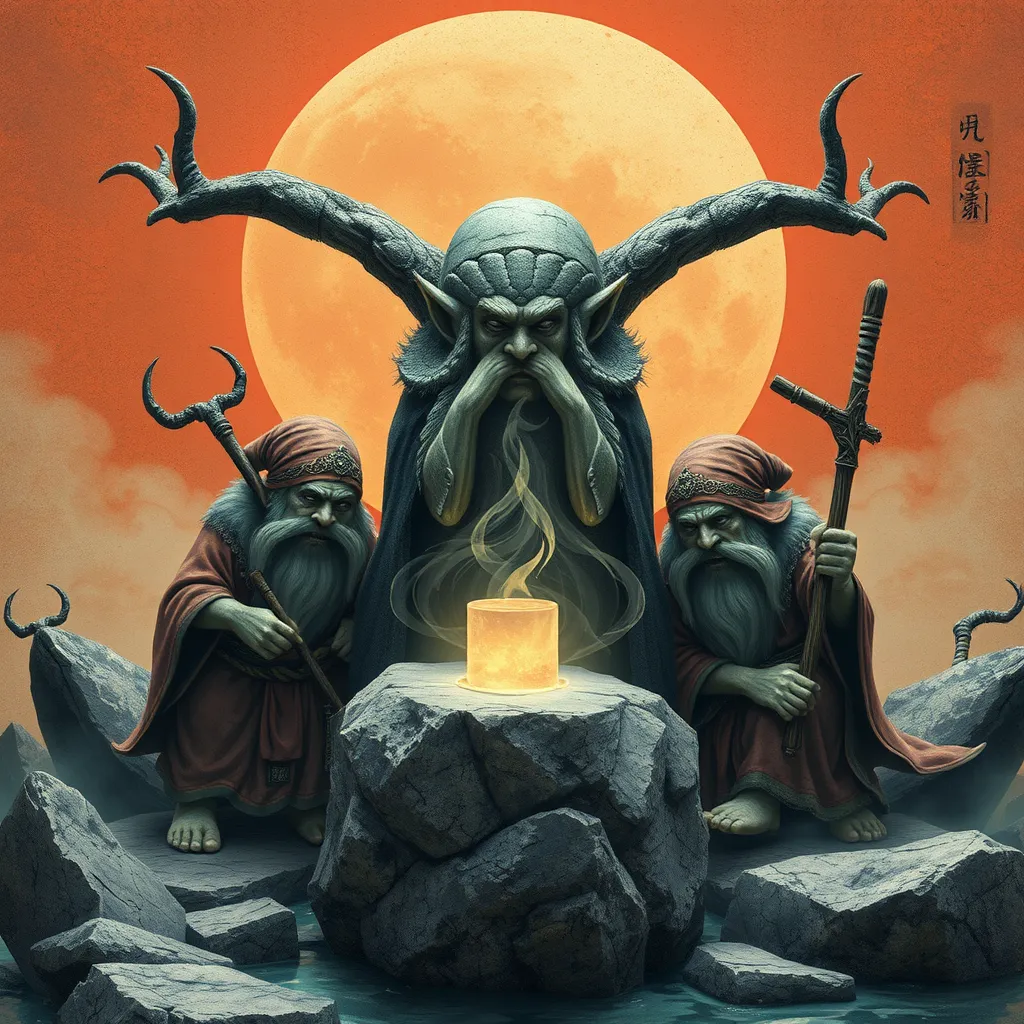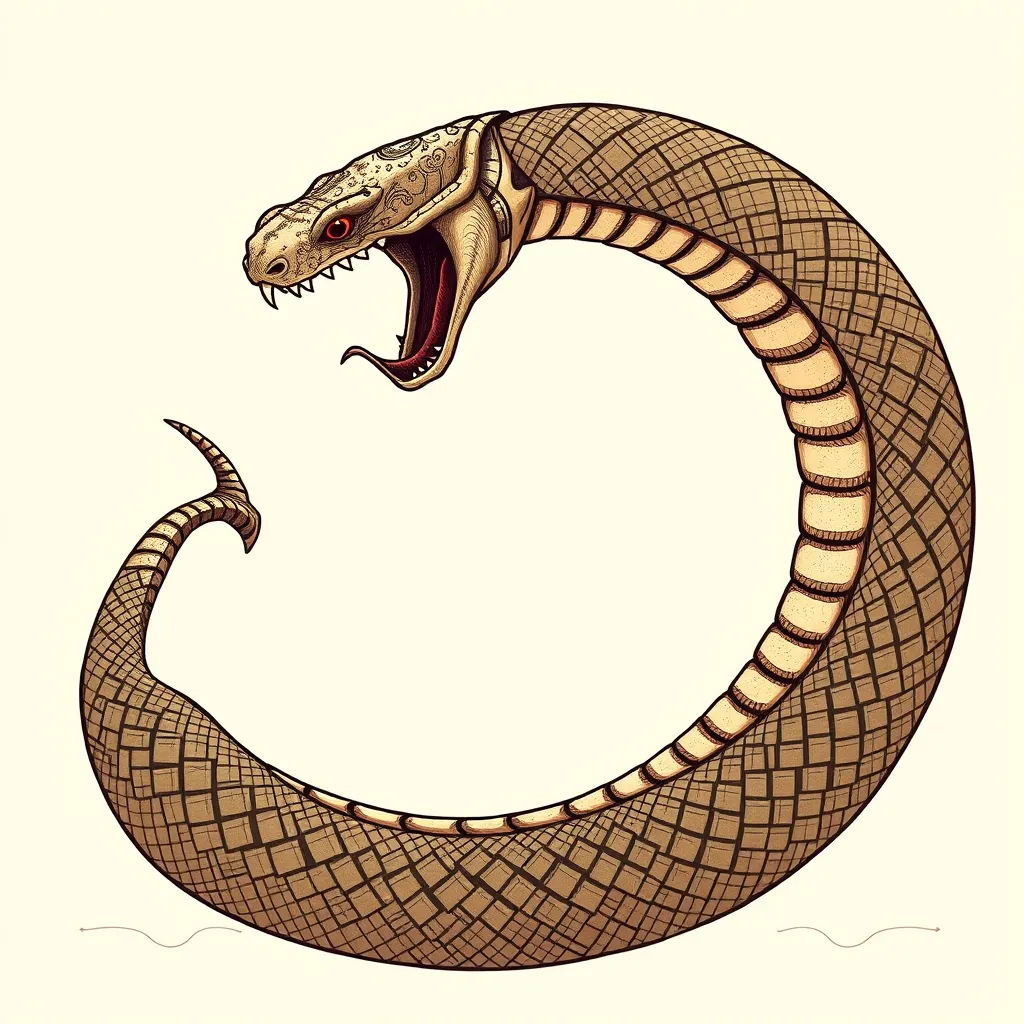From Stone to Spirit: The Nature of Dwarves in Japanese Mythology
I. Introduction
Dwarves hold a fascinating place in global mythology, often characterized as small, strong beings who possess a wealth of knowledge and skill, particularly in craftsmanship and mining. From the Norse dwarves who forged powerful weapons to the garden gnomes of European folklore, these figures have garnered a myriad of interpretations across cultures.
In Japanese mythology, dwarves are depicted in unique ways that reflect the cultural and spiritual landscape of Japan. The rich tapestry of Japanese folklore imbues these figures with distinct traits and narratives that set them apart from their Western counterparts.
This article aims to explore the nature of dwarves within Japanese mythology, delving into their origins, characteristics, roles in nature, spiritual significance, literary representation, and how they have been interpreted in modern culture.
II. The Origins of Dwarves in Japanese Mythology
The concept of dwarves in Japan can be traced back to ancient texts and oral traditions. Early mentions can be found in historical records and folklore where they were often associated with the earth and its riches.
Indigenous beliefs, particularly those rooted in Shintoism, have heavily influenced the characterization of dwarves in Japan. Shintoism emphasizes a deep connection to nature and spirits, which aligns with the role of dwarves as guardians of the earth.
In comparison to dwarven figures in other cultures, such as the Norse or Celtic traditions, Japanese dwarves are less about mining treasures and more about their spiritual connections to nature and the environment.
A. Historical context and early texts
- Early Japanese myths often feature dwarves as minor deities or spirits.
- Textual references can be found in the “Nihon Shoki” and other ancient chronicles.
- Folklore has preserved various tales that highlight their traits and roles.
B. Influence of indigenous beliefs and Shintoism
- Dwarves are often linked to kami (spirits) of the mountains and forests.
- Shinto rituals sometimes involve offerings to these nature spirits.
- Their representation aligns with themes of respect for the natural world.
C. Comparison with dwarven figures in other cultures
- Norse dwarves are skilled blacksmiths, while Japanese dwarves are more connected to nature.
- Celtic dwarves often appear as tricksters, unlike their more benevolent Japanese counterparts.
- Overall, Japanese dwarves embody a spiritual essence that reflects local beliefs.
III. Physical Characteristics and Symbolism
In Japanese folklore, dwarves are often depicted as short, stout beings, resembling the traditional image of dwarves found worldwide. However, their physical characteristics are imbued with greater symbolic meaning.
The symbolism of stone and earth elements is prevalent in the portrayal of dwarves. They are seen as embodiments of resilience and strength, representing stability and the enduring nature of the earth.
A. Description of dwarves in Japanese folklore
- Dwarves are typically described as small, robust figures.
- They may be depicted wearing traditional garments or rustic clothing.
- Facial features often convey wisdom and a connection to nature.
B. Symbolic meanings of stone and earth elements
- Stone symbolizes permanence and strength.
- Earth represents fertility and the nurturing aspect of nature.
- Dwarves are thus seen as protectors of these vital elements.
C. Representation of resilience and strength
Through their physical characteristics and elemental associations, dwarves symbolize the strength required to withstand the challenges of nature and adversity.
IV. Dwarves as Guardians of Nature
Dwarves in Japanese mythology are often portrayed as guardians of mountains, forests, and other natural resources. Their connection to the environment is integral to their identity.
They play a crucial role in protecting the balance of nature and ensuring that resources are used wisely and sustainably.
A. Connection to mountains and forests
- Dwarves are frequently depicted residing in mountainous regions or dense forests.
- They are believed to inhabit sacred spaces, serving as stewards of these areas.
B. Role as protectors of natural resources
- Dwarves are seen as guardians against environmental degradation.
- Folklore often involves stories of dwarves safeguarding precious resources from misuse.
C. Legends of dwarves’ interactions with gods and spirits
Legends abound of dwarves interacting with deities and spirits, often serving as mediators or guides. These stories underline their significance in the spiritual ecosystem of Japanese mythology.
V. The Spiritual Aspects of Dwarves
In addition to their earthly roles, dwarves in Japanese mythology also possess spiritual significance. They are viewed as mediators between the physical world and the spirit realm.
A. Dwarves as mediators between worlds
- Dwarves facilitate communication between humans and kami.
- They may conduct rituals or perform tasks that appease the spirits.
B. The concept of spirit and the afterlife in Japanese beliefs
Japanese beliefs about the spirit world emphasize the cyclical nature of life and death, with dwarves often occupying a unique place in these narratives, guiding souls or helping maintain harmony.
C. Rituals and practices involving dwarven spirits
- Rituals may involve offerings to dwarven spirits for protection and guidance.
- Local festivals sometimes celebrate the dwarves’ role in the community and nature.
VI. Dwarves in Japanese Literature and Art
Dwarves have been depicted in various forms of Japanese literature and art, showcasing their evolving representation through the ages.
A. Examination of notable literary works featuring dwarves
- Folktales often feature dwarves as wise characters or helpful spirits.
- Classic literature, such as “The Tale of the Heike,” includes references to dwarven figures.
B. Artistic representations and their meanings
Artistic depictions of dwarves often highlight their connection to nature, featuring them alongside elements like mountains, trees, and animals, reinforcing their role as guardians.
C. The evolution of dwarven depictions through time
- Dwarves have transitioned from traditional folktales to modern interpretations.
- Their portrayal has become more diverse in contemporary literature and media.
VII. Modern Interpretations and Cultural Impact
In contemporary media, the portrayal of dwarves continues to evolve, influenced by global trends and local culture.
A. Influence of contemporary media on the portrayal of dwarves
- Anime and manga often portray dwarves with unique traits and narratives.
- Video games incorporate dwarven characters with varied abilities and backgrounds.
B. Dwarves in anime, manga, and video games
These platforms have reimagined dwarves in dynamic ways, often blending traditional traits with modern storytelling techniques.
C. The relevance of dwarven mythology in modern Japanese culture
The enduring legacy of dwarven mythology resonates in Japan, as these figures continue to inspire stories, art, and cultural practices that celebrate their connection to nature and spirituality.
VIII. Conclusion
In summary, dwarves in Japanese mythology represent a rich and multifaceted aspect of cultural heritage. They embody resilience, serve as guardians of nature, and act as vital mediators in the spiritual realm.
The enduring legacy of dwarves in Japan underscores the intersection of myth, nature, and cultural identity, reminding us of the deep connections we share with the world around us.
As we continue to explore and reinterpret these figures, dwarves will undoubtedly remain a significant part of Japan’s mythological landscape, bridging the gap between the past and the present.



